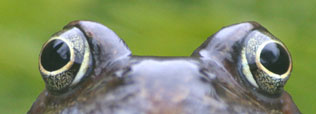Species data analysis
NatureSpot has over half a million records on its database, covering nearly 8,000 different species recorded in Leicestershire and Rutland (VC55). The Species Data Profile section provides some analysis of this data to help understand the status of each species and how this may be changing over time. Patterns over time are clearer when there are lots of records but some species have been recorded very infrequently. In these cases, caution is needed when interpreting the charts as few records don't provide much of a pattern.
Species Profile
The first and last records are based on the NatureSpot database but this doesn't necessarily include all known records for each species. The most comprehensive dataset for our area (VC55) is held by the Leicestershire and Rutland Environmental Records Centre. This includes NatureSpot data but also other VC55 records collected from various sources.
Total Records Per Month
This phenology chart tells us when each species is most commonly observed. However note that this includes different life stages and not just the adults. Many invertebrates overwinter in places protected from frost and predators but careful searching can also reveal their presence so they may be recorded 'out of season'.
Percentage Records Within Its Species Group
More records may simply reflect more recorders but by looking at the percentage of records within that species group (e.g. Birds or Beetles) gives us a better guide to relative abundance over time. Note that other factors can also influence how often a species is recorded, such as greater awareness from publicity and improved ID resources. Remember that the last column is the current year so doesn't give an accurate picture until the end of December.
10km Squares With Records
This chart gives us an indication of how widely distributed that species is across VC55 and how this is changing over time. If the bars are increasing in height it suggests that the species is expanding into new areas, and vice versa. Other factors can influence the coverage of records so it isn't an absolute measure, but it gives us a helpful insight.

